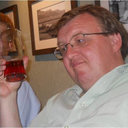Structural responses to cavity-creating mutations in an integral membrane protein.
Keywords
Abstract
X-ray crystallography has been used to investigate the extent of structural changes in mutants of the purple bacterial reaction center that assemble without a particular ubiquinone or bacteriopheophytin cofactor. In the case of the bacteriopheophytin-exclusion mutant, in which Ala M149 was replaced by Trp (AM149W), the quality of protein crystals was improved over that seen in previous work by minimizing illumination, time, and temperature during the purification protocol and carrying out crystal growth at 4 degrees C after overnight incubation at 18 degrees C. The X-ray crystal structure of the AM149W mutant, determined to a resolution of 2.2 A, showed very little change in protein structure despite the absence of the bacteriopheophytin cofactor. Changes in the electron density map in the region of the cofactor binding site could be accounted for by changes in the conformation of the phytol side chains of adjacent cofactors and the presence of a buried water molecule. Residues lining the vacated binding pocket did not show any significant changes in conformation or increases in disorder as assessed through crystallographic atomic displacement parameters (B-factors). The X-ray crystal structure of a reaction center lacking the primary acceptor ubiquinone through mutation of Ala M248 to Trp (AM248W) was also determined, to a resolution of 2.8 A. Again, despite the absence of an internal cofactor only very minor changes in protein structure were observed. This is in contrast to a previous report on a reaction center lacking this ubiquinone through mutation of Ala M260 to Trp (AM260W) where more extensive changes in structure were apparent. All three mutant reaction centers showed a decrease in thermal stability when housed in the native membrane, but this decrease was smaller for the AM260W mutant than the AM248W complex, possibly due to beneficial effects of the observed changes in protein structure. The lack of major changes in protein structure despite the absence of large internal cofactors is discussed in terms of protein rigidity, the protective influence of the adaptable membrane environment, and the role of small molecules and ions as packing material in the internal cavities created by this type of mutation.


